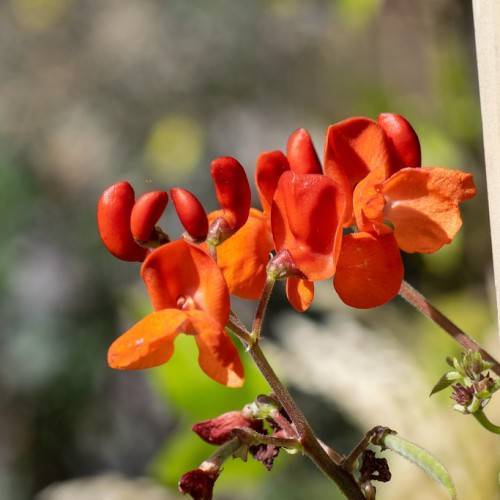
snap bean
Phaseolus coccineus
Cycle:
Annual
Watering:
Average
Hardiness Zone:
7 - 11
Flowers:
Flowers
Sun:
Full sun
Soil:
Humus rich, Well-drained
Fruits:
Fruits In Summer Ready In Fall
Edible:
Yes
Leaf:
Yes
Growth Rate:
High
Maintenance:
Moderate
watering
It is important to water snap beans regularly in order for them to produce healthy plants and maximize yields. The frequency and amount of water needed will vary depending on the climate and time of year, but generally speaking you should aim to water snap beans at least once or twice a week. During the hottest parts of summer, some gardeners may need to water every day. Snap beans should be watered deeply and slowly to make sure the moisture penetrates their root systems. One good way to water is to rotate your sprinkler. Make sure not to water too much, as too much can lead to fungus and disease. If temperatures are especially hot and dry, you may want to use mulch around your snap bean plants to help them retain moisture. It's also smart to check your soil moisture with a finger test to make sure your snap beans are getting the water they need. Finally, water in the morning or late afternoon to minimize evaporation and help give your snap beans the best chance of producing a delicious crop.
sunlight
Snap beans require approximately 8 to 10 hours of direct sunlight per day. Depending on the variety and location, the optimal amount of sunlight can vary. It is best to plant snap beans in a sunny, well-drained location to maximize their potential. As long as the temperature remains above 50°F (10°C), they can be safely planted. If planted in partial shade, the blooms and fruit may be fewer, stunted, and of lower quality. Temperatures can often exceed 90°F (32°C) during the summer months, so it’s essential to provide shade and water when necessary.
pruning
Snap beans should be pruned regularly throughout the growing season for optimal productivity. Pruning should begin when the plants are about 8-10 inches tall, removing any extra branches or shoots that are growing out of the main stem. This will help to keep the plant from becoming too bushy and better utilize the plant's energy for fruit production. Continue to prune off any extra stems or shoots throughout the rest of the growing season. Unneeded shoots should be removed as close to the main stem as possible to avoid stress to the plant. Snap beans should also be pruned near the end of the growing season to reduce the number of fruits on the plant so that the remaining pods can reach full size. This is done by cutting off the top part of the plant at the second or third node from the top. Finally, snap beans should also be pruned in the fall to remove any dead or diseased stems and branches in order to prepare the plant for the upcoming winter. Pruning can help reduce disease spreading among the plants, and it also reduces the risk of dormant season pests or diseases.
